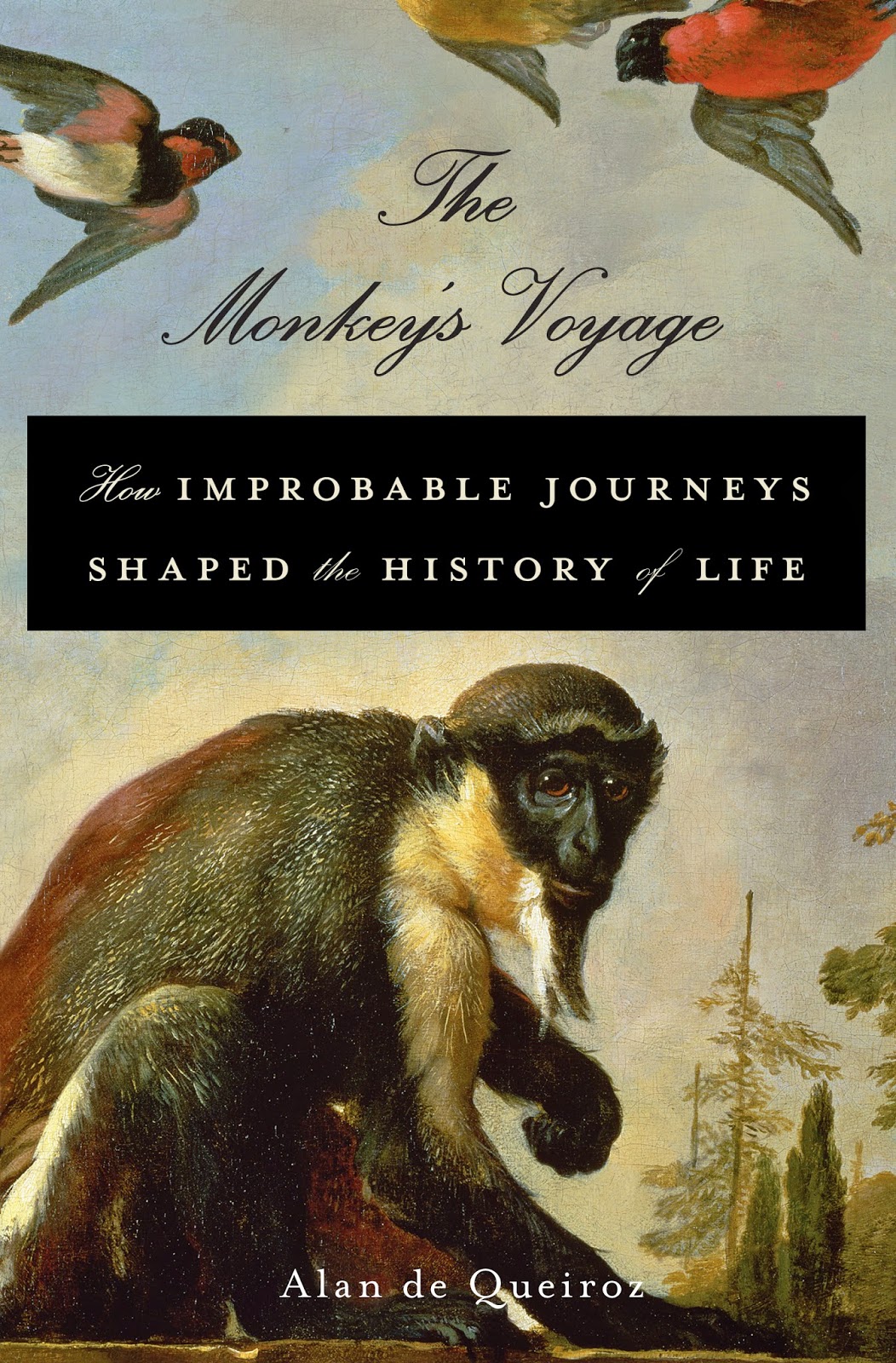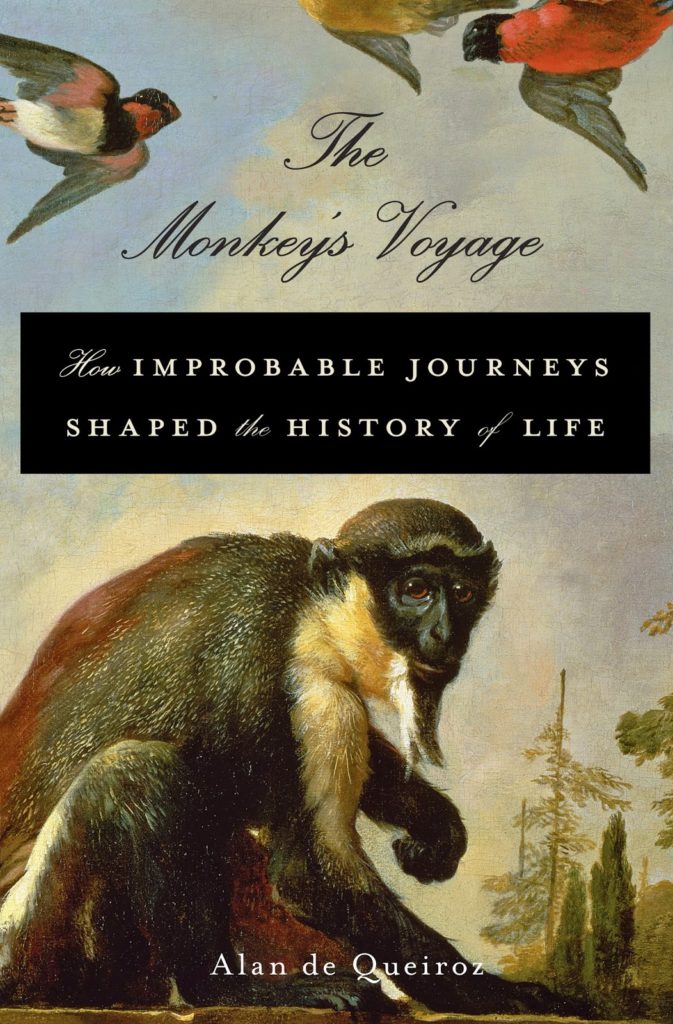history of ostriches, emus and rheas does not match the break-up of the
continents….scientists believe that their common ancestor could fly…..New
World monkeys rafted
to South America on a clump of earth…..these three groups
represent 73 percent of the land mammals living there…..
…
It was Darwin who first suggested that wolves arrived on the Falklands Islands by floating on icebergs. For making such an extraordinary speculation the greatest biologist ever was criticized in the strongest terms. Now there is fascinating evidence of snakes swimming 120 miles across the open ocean (and many others). Forget the boring old stories of human colonization, this is the exciting new story of animal colonization of the the planet we all call home.
……………
….
We are reminded here of Jurassic Park (the novel) where female dinosaurs had escaped from their habitat and had found a way to breed. Nature – it was famously said – will always find a way. And nature has found a way for creatures as immobile as snails to migrate from one continent to another by clinging on to the feet of birds.
…
In June 2000, Alan de Queiroz became curious about an enormous,
ragged-looking garter snake that lived on the tip of Baja California.
Like many other biologists of his generation, de Quieroz had been taught
that species traveled the Earth to new habitats on slowly drifting
continents.
…
This snake had relatives on the other side of the Sea of
Cortéz on Mexico’s mainland, and de Queiroz assumed that this population
ended up on Baja 4 to 8 million years ago, when the peninsula split
from the mainland.
…
But using a new method based on genetic
sequencing to estimate when the two populations split, he found that it
had occurred in the past few hundred thousand years. In other words, one
or more pioneering garter snakes had probably floated across 120 miles
of open ocean.
…
As de Queiroz prepared to write up the surprising
results of his snake study, he discovered that the reptile was not an
outlier. Biologists were finding that even after continents drifted
apart, plants and animals somehow hopped between them.
…
“Obviously, the
continents had moved — nobody was claiming that the theory of plate
tectonics was wrong — and obviously, they had carried species with
them,” he writes, “but somehow, these facts did not explain nearly as
much about the modern living world as we had thought.” Chance ocean
crossings did.
…
In his engaging new book, “The Monkey’s Voyage,”
de Queiroz makes the case that the vibrant and distinctive biological
communities we see today were created by organisms rafting across oceans
and soaring through the atmosphere. “The large number of these
colonizations tells us that, in the long history of this living world,
the miraculous has become the expected,” he writes.
To understand how contentious this notion is, de Queiroz takes us back
to the 1950s and ’60s, when a wealth of new information emerged about
continental drift. Geologists had long recognized that the coasts of
South America and Africa fit together like puzzle pieces and had
theorized that they were once a single landmass.
But now measurements
from the ocean floor revealed several ridges, including one in the
middle of the Atlantic Ocean, where the sea floor was spreading before
the scientists’ eyes. These discoveries provided a clear mechanism for
how the continents creep along. Geologists determined that,
approximately 180 million years ago, there was an ancient uber-continent
called Gondwana, which sat on the equator and was composed of what are
now South America, Africa, Antarctica, India and Australia.
Gondwana was also a revelation for evolutionary biologists. Its
break-up, they surmised, was probably etched in the history of life. For
instance, ostriches, emus and rheas, closely related birds found in
Africa, Australia and South America, became a textbook example of this
continental drift theory. Another famous example were southern beech
trees, which are found in South America, Australia and other smaller
pieces of Gondwana.
This theory was attractive because it was elegant and sensible, but,
as de Queiroz colorfully describes, its proponents became a little too
dogmatic about it. Léon Croizat, a self-trained botanist of French
heritage who lived in Venezuela, coined the phrase “Earth and life
evolve together” and believed that continental drift explained
everything about plant and animal distributions. To him, the idea that
plants or animals crossed oceans on their own was outrageous and
unscientific.
…
He characterized Darwin as “congenitally not a thinker,”
in part because of Darwin’s suggestion that wolves may have reached the
Falkland Islands on icebergs. Croizat came in for criticism himself. An
eminent American paleontologist called him “a member of the lunatic
fringe.”
…
Indeed, there had always been evidence that, over the
long history of life on Earth, plants and animals made remarkable
journeys. Consider, for example, that young spiders are carried on the
wind by their silky threads and land on the decks of ships far from the
coastline. Freshwater snails cling to the feet of migrating birds. And
fishermen on the Caribbean island of Anguilla once watched a natural
raft of logs get washed onto shore with 15 green iguanas on it, a
species that had not previously existed there.
…
Proof of how
important these journeys are in evolutionary history finally arrived in
the late 1990s with genetic-dating studies, such as the one de Quieroz
conducted on his garter snakes. We now know that the evolutionary
history of ostriches, emus and rheas does not match the break-up of the
continents. Some scientists believe that their common ancestor could fly
and that they became flightless only after settling on their respective
continents. Among the other creatures de Queiroz considers are New
World monkeys and two other groups of mammals, which apparently rafted
to South America on a clump of earth. Today, these three groups
represent 73 percent of the land mammals living there.
…
….
regards

